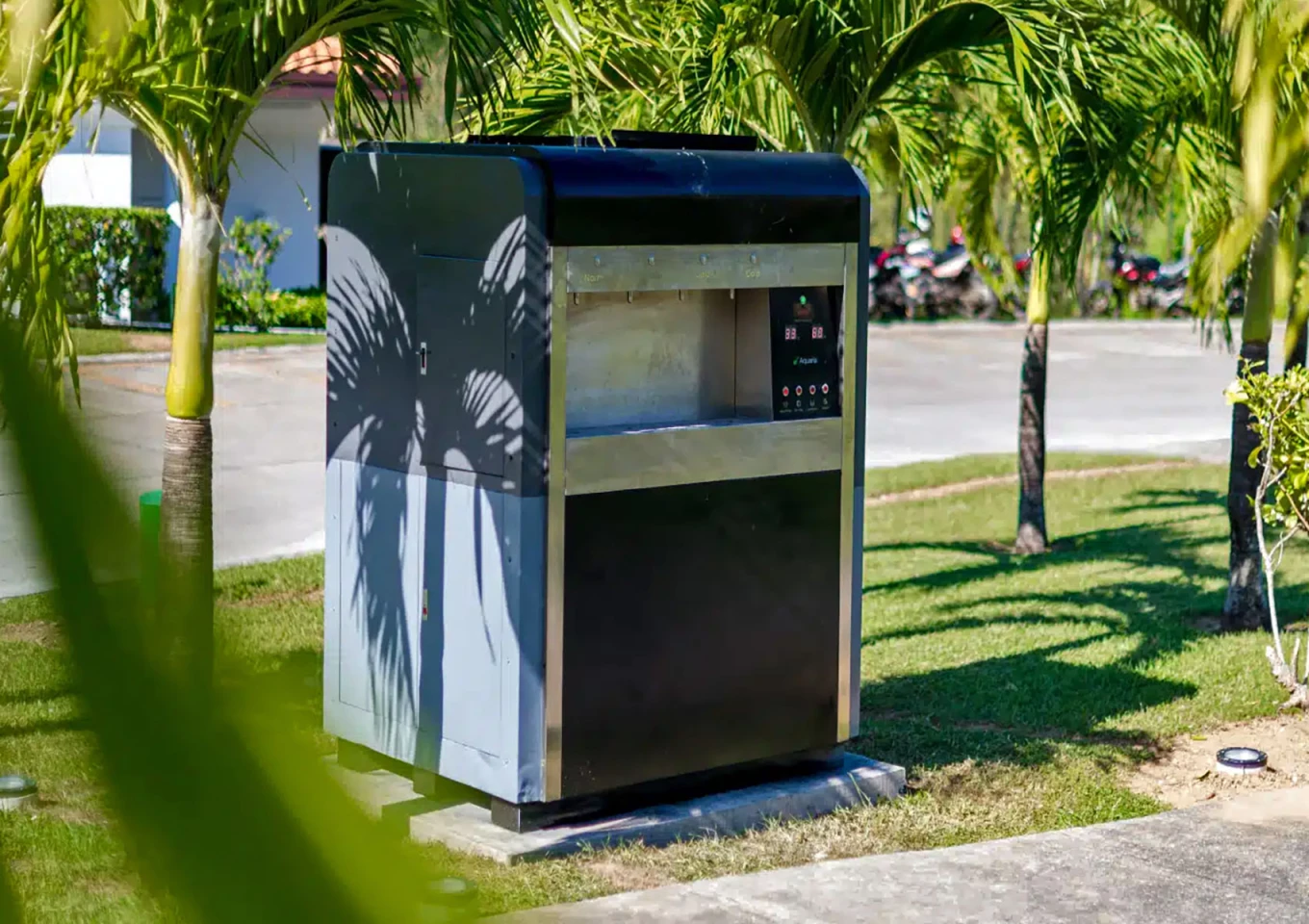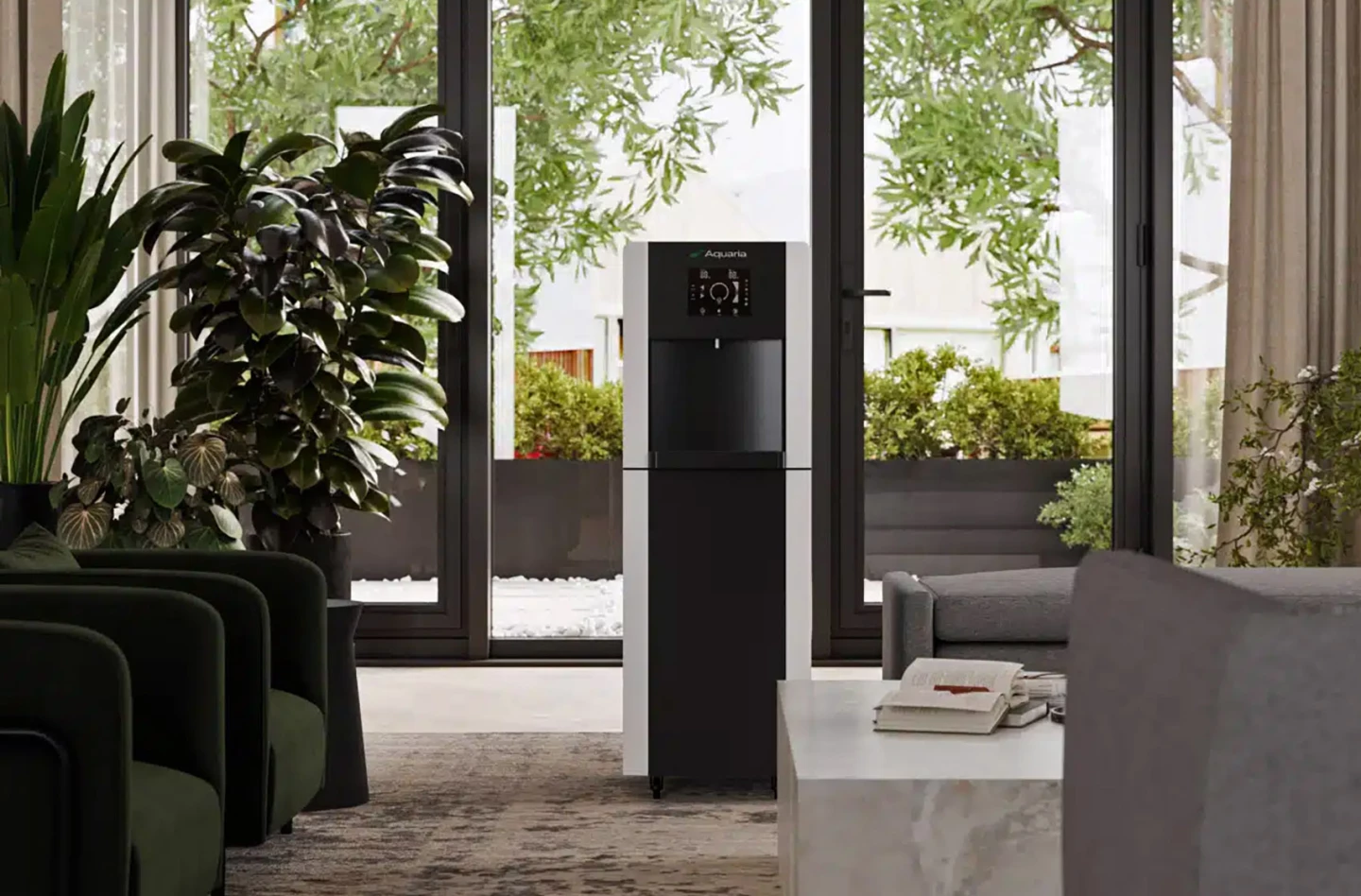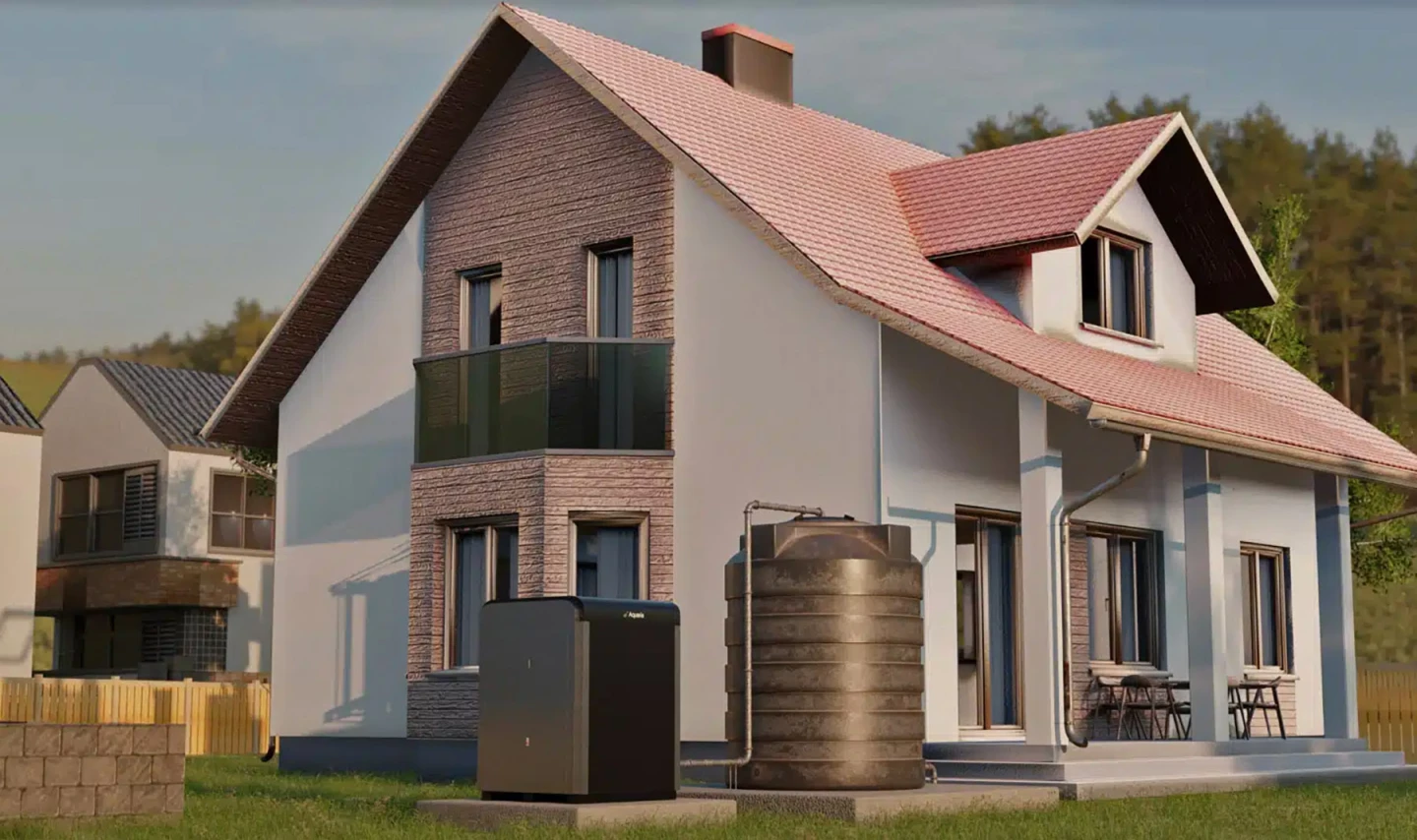As one of the four basic things humans need to live, clean drinking water is obviously of the utmost importance. While rainfall and rivers and lakes are the traditional go-to sources, climate change is making once reliable water sources much more undependable. Aquaria Technologies, a San Francisco-based company founded in 2022, is looking to provide affordable, clean drinking water for the masses by pulling it out of the air.
Whether you live in the desert or the tropics, there is moisture in the air – moisture that can be extracted and bottled for consumption or plumbed into your home for day-to-day living. While atmospheric water generators (AWG) aren't new, they've now become more efficient, affordable, and safer. And Aquaria was recently named as a finalist for the Future Resilience Prize in the 2024 Urban Future Prize competition for its self-contained solar-powered boxes that can produce water from the air for vulnerable communities.
Unlike your run-of-the-mill dehumidifier, which also pulls moisture out of the air, modern AWGs have particulate filtration, carbon filtration, and ultraviolet (UV) sterilization to kill any viruses or bacteria, with some models even offering mineralization to make the water taste better and increase its nutritional value. Without filtration and sterilization, dehumidifier water would be unsafe to consume, potentially containing contaminants from the air or the device itself.

Aquaria's range includes a stand-alone outdoor water dispenser, called the Hydrostation, which requires zero plumbing that could be used at parks, construction sites, resorts or any other application where as many as 1,500 people might be thirsty, and an at-home indoor water dispenser called the Hydropixel, that can make up to 24 gallons (91 L) of water per day and only requires an outlet for power.
Aquaria says that the Hydropixel is one of the most energy-efficient stand-alone atmospheric water generators in the world, using only 1.25 kWh per gallon (330 Wh/L). Depending on where you live and how much you're charged for electricity, that means a gallon (3.8 L) of water can cost anywhere from a single cent to upwards of US$0.66.

I pay $0.14 per kilowatt in my market, which would be $0.17 per gallon, far cheaper than the $0.50 per gallon at the water refilling station at my local grocery store, where I fill up about 20 gal (75 L) per week. The Hydropack – Aquaria's whole-home AWG solution – is rated even better at 0.93 kWh per gallon (245 Wh/L), suggesting a water cost of $0.13 per gallon.
Using energy sources like solar could bring that cost per gallon down near zero.
Aquaria also offers AWGs at a much larger scale. The Hydropack X (a two-Hydropack configuration) is capable of replacing an entire home's dependence on municipal water, producing up to 264 gallons (1,000 L) of drinkable water per day in perfect conditions.

Aquaria intends to supply a 1,000-home community in Hawaii later this year, which will rely entirely on atmospherically generated water.
According to the EPA, the average American household uses about 300 gal (1,136 L) every day. The EPA also reports that the average American family wastes 180 gal (680 L) of water per week. Small leaks alone contribute to nearly 900 billion gallons (3.46 trillion L) of wasted water across the United States per year. While Aquaria's figures might be less than the average household usage, a bit of eco-minded practice could make AWG entirely sustainable as your sole water supply.
However, where you live plays a considerable role in actual water generation due to temperature and humidity. Arid climates will produce much less per day, whereas humid areas will produce the most. The operating temperatures for all of Aquaria's devices look to be between 59-109 °F (15-43 °C). Outside of that, it may not work as well, if at all.
Climates like San Francisco will see figures closer to 132 gallons (500 L), whereas Miami would produce upwards of 250 gallons (950 L) per day with the Hydropack X. All excess water is stored in tanks for later use.
Aquaria AWGs come complete with software to monitor the water's quality 24/7 to exceed both EPA and WHO standards, regardless of the air quality, and the company recommends changing filters every 6-12 months, depending on usage and air quality.
For places where access to any water is difficult – let alone potable water – technology like atmospheric water generation could prove invaluable.
As temperature records continue to be broken with alarming regularity, coupled with droughts, lowered ground-water tables, deeper wells, and higher populations, we may become more dependent on desalination plants and AWGs.
Source: Aquaria







